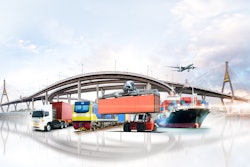
The European Union (EU) is moving forward with one of the world’s most significant supply chain laws. After years of heated debate, the European Parliament voted this April to adopt its long-anticipated Corporate Sustainability Due Diligence Directive (CSDDD), which will require companies to implement policies to mitigate environmental and human rights abuses in their supply chains. Under the law’s phased implementation, companies with more than 5,000 employees and revenue greater than €1.5 billion will have three years to comply. Within five years, the directive will apply to all companies with more than 1,000 employees and a turnover of €450 million.
As the EU debated the CSDDD, countries around Europe and North America didn’t wait to adopt their own sweeping due diligence laws. Last year, Germany enacted its new German Supply Chain Act, which obligates companies operating in the country to prevent child labor, poor working conditions, and environmental abuses from all levels of their supply chain.
Canada passed a strict supply chain reporting law, S-211, which holds companies’ business directors personally liable for abuses in their supply chain, and the United States is widely enforcing its new Uyghur Forced Labor Prevention Act, which forbids the importation of any goods produced or manufactured wholly or in part in the Xinjiang region of China on the presumption that were made with forced labor.
READ MORE about the Uyghur Forced Labor Prevention Act
In 2023, 16 pieces of legislation relating to fashion and textiles were under discussion in the EU alone. This March, the EU reached a provisional agreement on new rules for separate legislation that ban forced labor in supply chains. Another European due diligence law, the European Union Deforestation Regulation (EUDR), aimed at curbing deforestation and forest degradation by regulating the market and export practices within the EU, has already passed and will go into effect at the end of the year. In light of new regulations, there is an added imperative to shift sourcing operations away from higher-risk countries like China, where there are growing concerns about human rights violations.
These regulations have made it abundantly clear that a superficial understanding of an enterprise's supply chain is no longer sufficient. Outdated, manual supply chain management processes are no longer enough to manage expanding considerations, including chain of custody and Scope 3 carbon emissions. To make informed and sustainable decisions, brands and retailers require a comprehensive, 360-degree view of their supply chain, but that’s impossible given the siloed nature of traditional supply chain systems.
These dynamics reinforce the imperative for fashion retailers to invest in robust digital solutions geared toward efficiency and sustainability. Digitalization introduces the visibility that businesses need to constantly monitor, analyze, and improve the sustainability performance of their supply chains down to the Nth tier, including water and energy consumption and Scope 3 carbon emissions. This visibility, in conjunction with cloud-based collaboration tools, allows retail businesses to better align with their suppliers on sustainability goals, something that’s proven to be a challenge for the industry. Recent studies have repeatedly found that in matters of sustainability, many global suppliers lag behind the soaring expectations of brands, consumers, and regulators.
A key factor for companies’ success in environmental, social, governance (ESG) initiatives is the ability to synchronize with these suppliers. Every stakeholder, from the raw material provider to the final logistics partner, must have a clear understanding of the company’s expectations. Through digitalization with a multi-enterprise platform, brands and retailers can enforce their sustainability standards and monitor suppliers’ progress while fostering the real-time collaboration and communication necessary to work toward these goals together. This collective alignment also enables accurate, transparent reporting on corrective action plans and the sustainability performance of suppliers down to the Nth tier.
Considering Sustainability at Every Stage
Global brands and retailers can only accomplish so much with a fragmented view of their supply chain operations and cannot merely rely on tier one vendors for compliance. They must extend their understanding, collection, and measurement to encompass lower-tier suppliers as well, ensuring business practices across the board align with regulations. Sustainability touches nearly all supply chain processes, and companies need an integrated perspective that captures the specificities of both environmental and social sustainability. From the outset, where product developers conceptualize eco-friendly designs, to the end, where logistic teams consolidate shipments to minimize their environmental footprint, sustainability impacts every decision made during the product lifecycle.
Product designers, for instance, must balance innovative designs with low-impact materials. From the drawing board, they should embed circularity into their designs so that each garment is conceived with its entire lifecycle in mind. Sourcing teams, meanwhile, need to carefully vet suppliers on their social sustainability performances. Order and procurement teams must emphasize bulk ordering or optimized procurement cycles to reduce transportation footprints. Every department plays its part: A product design team might choose biodegradable materials, but if the sourcing team procures from a high-risk supplier, the chain breaks. This is another area where multi-enterprise platforms excel by offering data-driven insights that help predict and manage risks, thereby maintaining efficiency in the complex world of sustainable fashion sourcing.
Only a comprehensive multi-enterprise platform creates a panoramic, real-time view that is essential for guaranteeing all stakeholders and departments live up to their shared responsibility. The right multi-enterprise platform provides the most complete suite of tools and features to empower global brands and retailers to improve both environmental and social sustainability, offering a complete solution that spans from partner selection, through product creation, production, and logistics. In response to retail’s surging demand for deeper transparency and traceability, companies need innovative supply chain mapping tools, and gain a comprehensive view of their environmental social impact, including their carbon emissions, water and cotton usage, and the origins of their yarns and fabrics.
These cloud-based platforms aid companies in tracing products back to their source and tracking chain of custody but also play a crucial role in risk mitigation, alerting businesses to missing or incomplete information and outdated certifications.
Multi-enterprise supply chain platforms go significantly beyond traditional product lifecycle management (PLMs), offering a rigorous, multi-tier supplier verification process and ensuring that suppliers meet the company’s specific sustainability standards. To facilitate vetting against the recognized sustainability standards of organizations, businesses need seamless integrations and partnerships with these leaders in their respective fields. A platform like this serves as a central repository of all mandatory, ESG-related information, making it readily accessible to all stakeholders.
Standards of sustainability are always evolving. Today’s best practices will be inadequate five years from now. Emerging challenges around wastewater management, deforestation, and circular economies are rapidly gaining prominence, and each new sustainability concern brings with it a gamut of regulations, adding complexity to an already intricate supply chain landscape.
Brands are grappling with not just adhering to these regulations but integrating them seamlessly into their operations to maintain a competitive edge. This dynamic reinforces the criticality of digitalization. By adopting a multi-enterprise platform, retail businesses can ensure they remain ahead of global regulations and consumers’ expectations today and into the future.




















